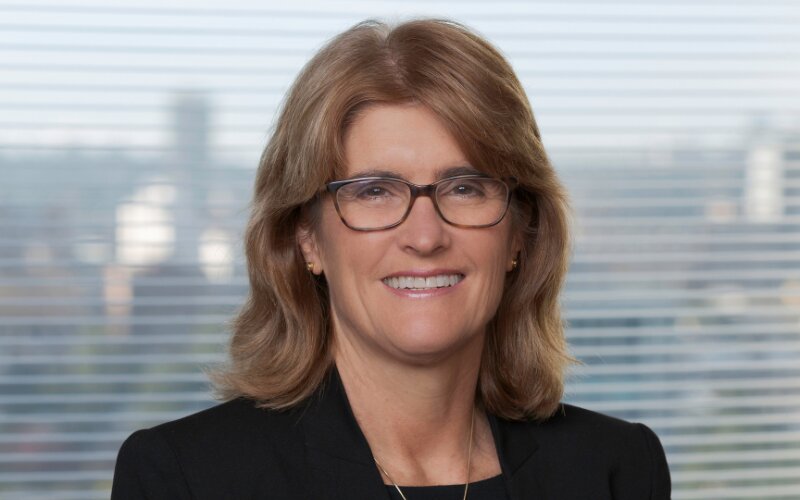The widely expected 0.5% rate cut from the Fed comes despite the US economy's above-target inflation rate of 2.5% and relatively low unemployment rate of 4.2%.
In its accompanying statement, the Fed's Committee said it had gained greater confidence that the economy's "somewhat elevated" inflation is moving sustainably toward its 2% target, while the goal to achieve maximum employment remained "roughly in balance".
"The economic outlook is uncertain, and the Committee is attentive to the risks to both sides of its dual mandate," it said.
"In light of the progress on inflation and the balance of risks, the Committee decided to lower the target range for the federal funds rate."
Given the heightened expectation of such a move, market reactions to the decision were relatively muted, with the S&P 500, Dow Jones and Nasdaq all ending the day 0.25-0.31% lower.
Meanwhile, the Aussie dollar briefly spiked above 68 US cents within 20 minutes of the announcement, before dropping back down to 67.5 US cents a short time later.
In a press conference following the decision, Fed Chair Jerome Powell kept a lid on market optimism by stressing that the Committee was not in a rush to ease rates.
However economists and markets generally expect many more US rate cuts to come.
CommBank economists forecast the US to cut rates by 25 basis points (0.25%) at every meeting from now on until the federal funds rate is 3.00-3.25%, a total easing of 225 basis points.
US joins UK, Canada, NZ in cutting rates. Australia fashionably late?
The US now joins the likes of the UK, Canada, New Zealand, Sweden, Denmark and Switzerland (among others) to have experienced a central bank rate cut in 2024.
This latest move is likely to lead more Australian households to wonder when it's Australia's time to join the party.
However, as Federal Treasurer Jim Chalmers acknowledged in an interview on the Today Show on Thursday morning, interest rates in the US rose more than they did in Australia - as they did in many other developed nations.
Many major central banks were also much quicker to raise rates than the RBA: the first US rate rise was in March 2022 along with Canada, the UK in December 2021 and New Zealand in October 2021. Australia's didn't occur until May 2022.
"Even after this interest rate cut overnight in the US, interest rates are still higher in the US than they are here," Mr Chalmers said.
"When the Reserve Bank meets next week they will consider a whole range of things including that, but they’ll be primarily focused on inflation, as the government is."
The RBA is not expected to move rates either up or down in its decision next week, with markets pricing a 90% chance of a hold and a 10% chance of a 25 basis point decrease, according to the ASX RBA Rate Tracker as at 18 September.
However, the tracker does suggest markets anticipate four RBA rate cuts in the next 12 months, with the first expected in February 2025.
Rate cuts already on offer to Aussie borrowers
This market expectation of rate cuts is already leading to savings for borrowers, with bond yields generally falling around 50 basis points in recent months, in turn reducing funding costs for banks and lenders which are passing these on to new borrowers via cuts to fixed-rate home loans.
Many fixed-rates on home loans are now around 50 basis points lower than most variable rates, effectively allowing borrowers to lock in two RBA rate cuts on their home loan before the RBA have lifted a finger.
One of the many banks to have reduced fixed-rates on home loans this month is ubank which lowered rates by up to 73 basis points.
Speaking on the Savings Tip Jar podcast on Wednesday, ubank's Chief Product Officer of lending Kanishka Raja said these lower rates reflected the bank's lower funding costs plus customer expectations of RBA rate cuts.
"What the reduction in the fixed rate offers to the customer...is an opportunity to lock in a lower rate right now and get ahead of that [RBA] rate reduction, because the gap between fixed rates and variable rates at the moment is roughly the equivalent of one to two rate cuts, which represents the expectation of where the market believes the RBA is going to go," Mr Raja said.

Ready, Set, Buy!
Learn everything you need to know about buying property – from choosing the right property and home loan, to the purchasing process, tips to save money and more!
With bonus Q&A sheet and Crossword!



 Hanan Dervisevic
Hanan Dervisevic
 Harrison Astbury
Harrison Astbury


